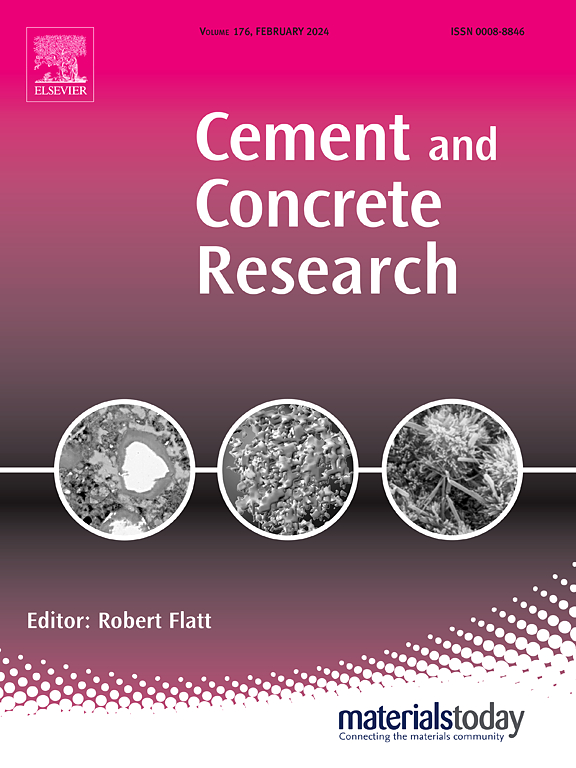不同相对湿度条件下水泥浆体加速碳化过程的变化机理
IF 13.1
1区 工程技术
Q1 CONSTRUCTION & BUILDING TECHNOLOGY
引用次数: 0
摘要
本研究研究了低、中、高相对湿度(RH)条件下OPC水泥浆体含水量和碳化的演变,强调了水在加速碳化和微观结构改变中的作用。在高RH条件下,28 d后,由于钙离子在地表积聚,形成方解石沉淀,碳化作用被抑制。方解石的形成导致了致密的碳酸钙层,减少了CO₂溶解的气液界面面积,阻止了进一步的水蒸发和碳酸化过程。低相对湿度导致水合硅酸铝酸钙(C - (A) - s - h)的团聚,增加了微观结构中的空白空间。这有利于CO₂的渗透,但由于水的可用性不足,限制了CH的碳化。这些发现突出了水分分布和微观结构演化在CO₂固存中的重要性,揭示了RH通过改变胶凝材料的孔隙结构和随后的水分有效性,对碳化过程产生关键影响。本文章由计算机程序翻译,如有差异,请以英文原文为准。
Mechanisms of change in accelerated carbonation progress in cement paste under different relative humidity conditions
This study investigated the evolution of water content and carbonation in OPC cement paste under low, intermediate, and high relative humidity (RH) conditions, emphasizing the role of water in accelerated carbonation and microstructural modifications. Under high RH, the carbonation suppressed after 28 days owing to calcium ion accumulation at the surface, precipitating as calcite. This calcite formation leads to a dense calcium carbonate layer, reducing the gas–liquid interfacial area for CO₂ dissolution and blocking further water evaporation and carbonation process. Low RH conditions cause the agglomeration of calcium silicate aluminate hydrate (C–(A)–S–H), increasing empty space in the microstructure. This facilitates CO₂ penetration but limits CH carbonation due to insufficient water availability. These findings highlight the significance of water distribution and microstructural evolution in CO₂ sequestration, revealing that RH critically influences the progress of carbonation by altering the pore structure and subsequent water availability in cementitious materials.
求助全文
通过发布文献求助,成功后即可免费获取论文全文。
去求助
来源期刊

Cement and Concrete Research
工程技术-材料科学:综合
CiteScore
20.90
自引率
12.30%
发文量
318
审稿时长
53 days
期刊介绍:
Cement and Concrete Research is dedicated to publishing top-notch research on the materials science and engineering of cement, cement composites, mortars, concrete, and related materials incorporating cement or other mineral binders. The journal prioritizes reporting significant findings in research on the properties and performance of cementitious materials. It also covers novel experimental techniques, the latest analytical and modeling methods, examination and diagnosis of actual cement and concrete structures, and the exploration of potential improvements in materials.
 求助内容:
求助内容: 应助结果提醒方式:
应助结果提醒方式:


